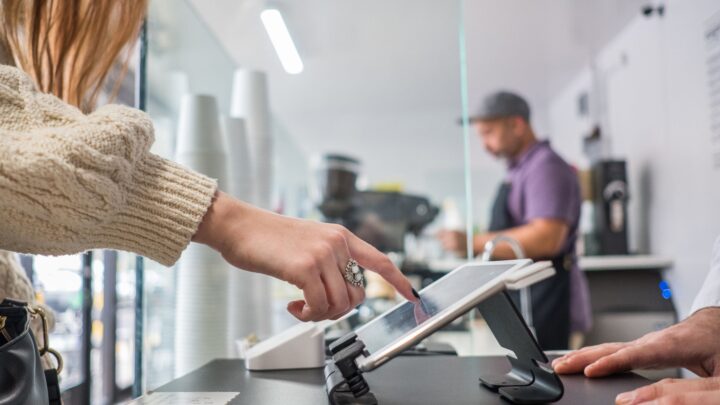8 Tips in Restaurant Inventory Management

Inventory management is the process of checking your stocks and ensuring that you have the ingredients that you need. It’s vital to make sure that you can serve the items that your customers will order, and also prevent food waste. Overstocking and understocking can both costs you money. Having more ingredients than you need can result in spoilage, which is a waste of money. Not having enough stocks can also mean losing sales since you will fail to serve your customers if you do not have your ingredients. Properly managing the inventory of your restaurant will help your business operate properly and maximise your profit. Here are some tips on how to manage your restaurant’s inventory.
Use a POS system and do manual inventory too

A POS or point of sale system will monitor your sales and track inventory. It also has other helpful features like accounting, order planning, and forecasting. Even if you have one in your restaurant, it’s still best that you do a manual inventory, especially since the POS system does not monitor wasted stocks due to spillage, incorrect serving, or over-preparing of ingredients. Keep track of the stocks that went to waste, so you can make a plan on how to prevent this from happening.
Based on inventory, plan the delivery schedule of ingredient suppliers
Regularly checking your inventory will ensure that you are on top of everything. You will know the ingredients that you need to order and which ones still have enough stocks. Some items that you need to check daily are perishable goods, key ingredients and expensive items. Other stocks can be checked once a week. If you are running out of ingredients, order from wholesale food suppliers like Kiril Mischeff to get the items you need at a discounted price. Bulk orders will save you on cost, as long as you order the right amount.
Forecast orders using the past inventory
Doing a regular inventory will give you a better understanding of the flow of your stocks. You will know which ones are used frequently and which ones are not. You may run out of ingredients for the popular items in your menu a lot quicker than unpopular ones, so you want to make sure that you have enough supplies for those. Base how much you need to order from your record.

Designate key people to do the inventory
Only a few people must do the inventory. Choose key staff, like chefs and managers, to do the task. It will prevent losing stocks due to theft. If the employees know that you do a regular inventory, they will have second thoughts about stealing supplies from the kitchen. Also, if the same people catty out the inventory, they will be familiar with how the stocks go. For instance, they will know which items are used often. They can then make an informed decision on which supplies to purchase.
Check the supplies as soon as they arrive
It may require time and effort, but train your staff to check the supplies when they arrive. It’s to prevent any hassle if you need to return something in case of problems like spoiled items, incorrect products, or not having the right amount. If they check the supplies when they arrive, they will know right away if there are issues. With this, they can deal with them immediately.
Besides the hassle of having to return spoiled or incorrect items, you also risk losing sales. You may not have the needed ingredients to serve the orders of your clients because of the returned supplies. Until the new supplies arrive, you will keep losing sales. You can prevent this if you determine the issue as soon as possible, and it is quickly taken care of.
Use FIFO or first in, first out method
First in, first out is a method in which you will use the items that came in first. It will prevent old stocks from being left out and becoming spoiled later on. If you use the older one first instead of the supplies that recently arrived, you will maximise the use of your ingredients, and avoid waste.
Be creative with your excess ingredients
By doing a regular inventory, you will know which items are about to spoil. Instead of letting them rot and allowing them to go to waste, think about how you can use them. Determine how you can incorporate them on the items on your menu or think of other recipes that you can whip using them. Offer them as specials for the day. Specials are not on your regular menu items, but you offer to customers now and then. Be sure to do a kitchen test for these new recipes to keep the quality of the foods you offer in your restaurant.
Keep the stocks organised

Part of inventory management is keeping your stocks organised. Place the same items in one place, so it will be easier to find them. It will ensure accurate inventory, as you can count the supplies that you have properly. Misplaced items will affect your inventory since they will not be counted correctly. Going back to the FIFO method, put the older stocks in the first row, so they will be the ones to use first.
Aside from ensuring proper inventory, having an organised stock will also make it easier for your staff to find what they are looking for. They don’t have to look through all the ingredients and take time to find them. Finding the items they need quickly will ensure that they can prepare the orders fast and serve them quickly. It will create a positive customer service experience that will benefit your restaurant. Quality foods and excellent service will keep them coming back, and they will also recommend you to other people.
Incorporate proper inventory management in your restaurant operation to ensure that you do not run out of the supplies you need. It will also ensure that you do not lose money due to the spoilage of ingredients. Ensure that everyone in the kitchen uses the supplies that came in first. Train trusted employees to perform a regular inventory.
